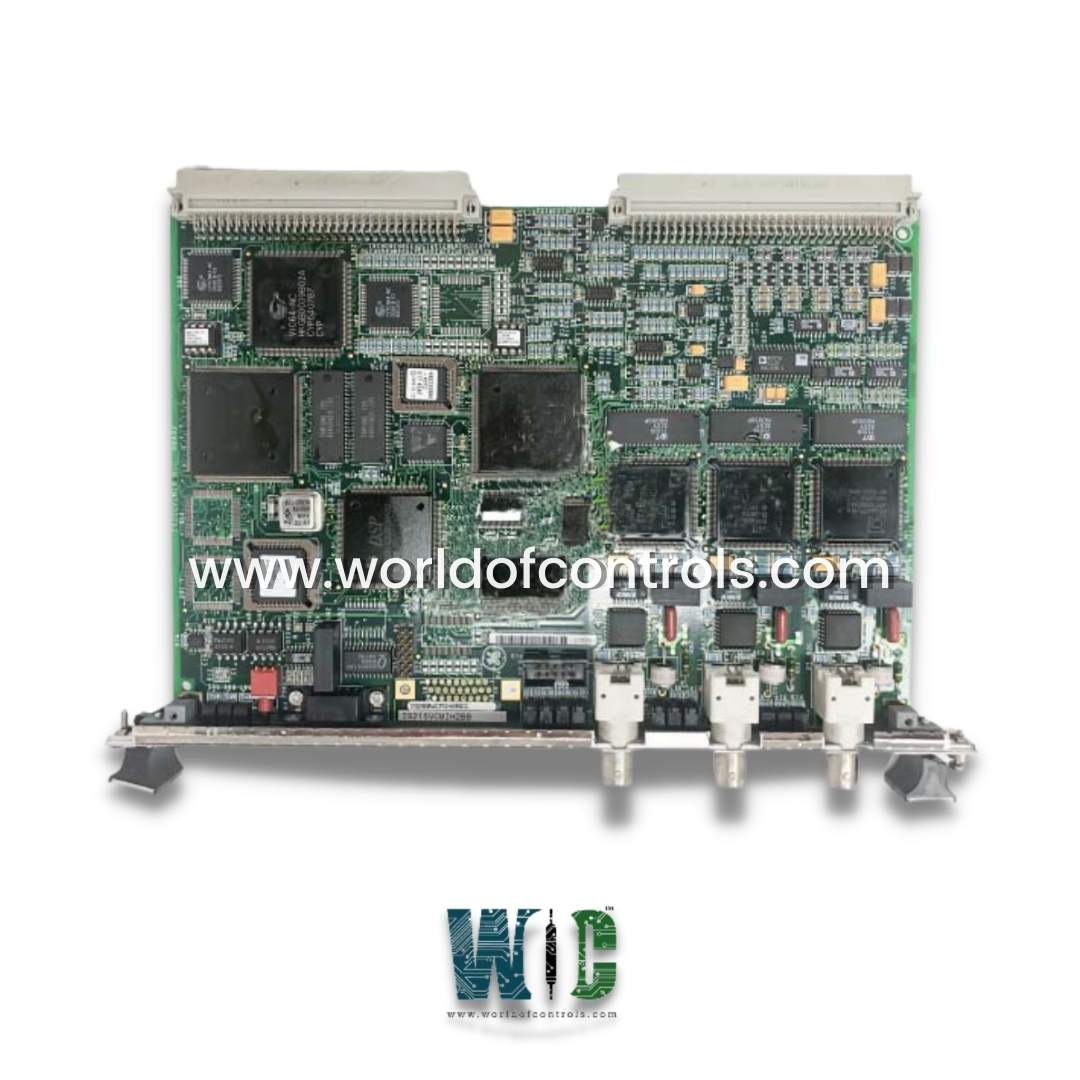SPECIFICATIONS
Part No.: IS200VCM1H2B
Manufacturer: General Electric
Product Type: Bus Master Controller Board
Board Type: 6U high VME board
Size: 0.787 inch wide
Processor: Texas Instruments TMS320C32 32-bit
Dual-port memory: 32 Kbytes in 32 bit transfer configuration
SRAM: 256k x 32
Flash memory: 512k x 8-VCMIH_B; 4096K
Technology: Surface mount
Temperature Operating: -30 to 65oC
Availability: In Stock
Country of Manufacture: United States (USA)
Series: Mark VI
Functional Description
IS200VCM1H2B is a Bus Master Controller Board developed by GE. It is a part of Mark VI control system. The VCMI (VME Communication Interface) plays a role in the overall operation and integration of control systems. It serves as the primary communication interface between the controller and the I/O boards, as well as the system control network known as IONet.
Features
- The Bus Master Controller Board facilitates seamless communication between the controller and the various I/O boards installed in the system. This interface ensures that data is accurately transmitted and received, enabling precise control and monitoring of the connected devices.
- It acts as the communication bridge to the system control network, IONet. This network is critical for coordinating control operations across multiple components and systems, ensuring synchronized and efficient performance.
- As the VME bus master, the Bus Master Controller Board oversees the data bus within the VME rack. This role includes managing the timing and control signals necessary for data transfers between the processor and the various I/O boards. By controlling the VME bus, the VCMI ensures that all data transactions occur in an orderly and efficient manner, minimizing latency and maximizing throughput.
- The VCMI is responsible for managing the unique identifiers (IDs) for all the boards installed in the rack and their associated terminal boards. This management is essential for maintaining a clear and organized system architecture. By assigning and overseeing these IDs, the VCMI ensures that each board and terminal can be correctly identified and addressed during operations. This prevents conflicts and errors that could arise from misidentification or overlapping IDs.
- Through its various roles, the board enhances the overall coordination of the control system. It ensures that communication between the controller, I/O boards, and the system network is reliable and efficient. The VCMI's ability to manage the VME bus and board IDs further supports the system's stability and performance, making it a vital component in complex control environments.
Diagnostics
- Power Supply Monitoring: The system monitors several internal power supply buses, including 5 V, 12 V, 15 V, 28 V. Each power supply bus is equipped with monitoring and alarm functionalities. Alarm settings are typically configured to trigger alerts when the voltage deviates beyond set thresholds, which are usually set at 3.5 percent for most supplies. However, the 28 V supplies have a wider threshold set at 5.5 percent for alarm activation. Monitoring these power supply buses ensures that any fluctuations or deviations from nominal voltage levels can be promptly detected and addressed to prevent potential system failures.
- Diagnostic Signals from Power Distribution Module (PDM): The system also monitors diagnostic signals from the Power Distribution Module (PDM), which is connected through J301. Ground fault detection on the P125 V bus. Over/under voltage conditions on the P125 V bus, ensuring that the voltage remains within safe operating limits. Two differential 5V DC analog inputs (P28A and PCOM) are monitored to ensure stability and accuracy in external monitor circuits. Digital inputs that provide status and control signals for various system components and functions.
- Configurability and Alarm Settings: The alarm settings for these diagnostics are configurable, allowing system operators to adjust thresholds and sensitivity based on specific operational requirements and environmental conditions. Configurable alarm thresholds ensure that alerts are triggered only when significant deviations occur, minimizing false alarms while maintaining robust monitoring capabilities.
- Integration and Response: Integration of these diagnostic features ensures comprehensive monitoring of critical system parameters related to power supply and distribution. Rapid detection and response to potential issues, such as ground faults or voltage fluctuations, help maintain system reliability and minimize downtime.
World of Controls has the most comprehensive collection of GE Mark VI components. Please contact WOC as soon as possible if you require any extra information.
Frequently Asked Questions
What is IS200VCM1H2B?
It is a Bus Master Controller Board developed by GE
What power supply buses are monitored within the system?
The system monitors several internal power supply buses, including 5 V, 12 V, 15 V, and 28 V. These buses are critical for providing stable power to various components within the system.
How are alarm settings configured for the power supply buses?
Alarm settings for the power supply buses are typically set at 3.5 percent deviation from nominal voltage levels, except for the 28 V supplies, which have a wider threshold set at 5.5 percent. These settings ensure that alerts are triggered when voltage deviations exceed safe operating limits.
Why are configurable alarm settings important for diagnostics?
Configurable alarm settings allow operators to adjust thresholds based on specific operational requirements and environmental conditions. This flexibility helps minimize false alarms and ensures that critical deviations are promptly detected and addressed.
